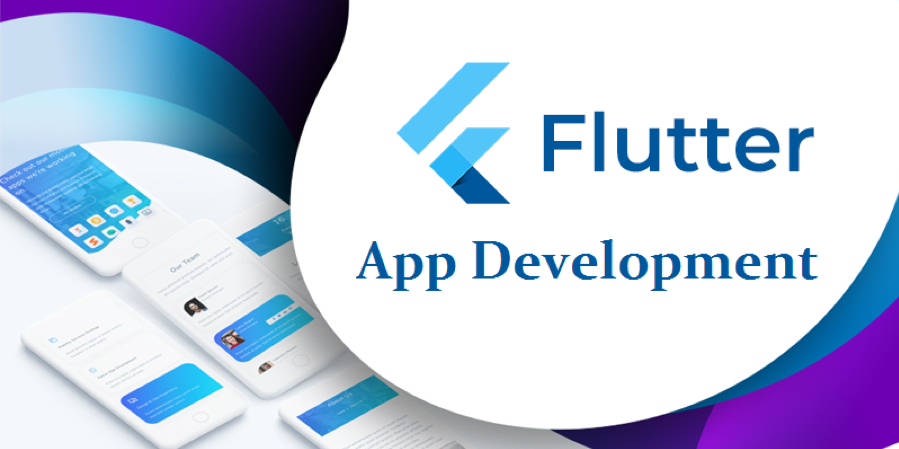When it comes to building mobile apps, Android & iOS are the best-suited platforms. Both of them require different coding for giving birth to an app. Such things create a nuisance for the organizations, who are into the app creation genre. That’s mainly, the cross-platform development came into limelight.
With cross-platform app development, your app will run placidly on multiple platforms. You’re required to code just once for your application, which will be fully compatible with several operating systems. That’s the noteworthy part of this technology.
Coming to its popularity, it is stealing the attention of the developers because of its advanced set of features and tools. They’re finding them extremely helpful in the app development process. React Native, PhoneGap, Xamarin, etc, are some tools that are provided via cross-platform app development. All of these tools have their own pros and cons.
Owing to the consistent changes in the tech world, Flutter has been launched by Google in 2018. It has got immense appreciation all around the world. Now, let’s sail deep into Flutter, and it’s the future to develop a solid foundation.
What is Flutter?
Flutter is essentially a software development pack introduced by Google that uses Dart language for the coding. It has completely fulfilled the missing features that were initially found in the cross-platform tools. Applications that are built using Flutter are fully compatible across multiple platforms.
The developers and site owners look for an efficient and light pack to develop a top-grade performance app. That’s mainly, Flutter has become a priority for both of them.
To make the successful launch of the Flutter, the Google developers have worked day and night.
Key points on which they’ve worked on:
Potential reasons for choosing Flutter over other Cross-platform frameworks:
Flutter helps to accelerate the app development process. It has the potential of reducing the app-building cost and renders an interactive interface. Now, let’s discuss the important reasons for opting Flutter:
With Flutter, you will not encounter any compatibility related problem as it is adaptive to various platforms. The time that gets consumed in testing and debugging can be minimized using this tool. Want to learn more about software testing and debugging? Head to the Parasoft website for an overview of services that can help to make sure your software is working at its best.
The hot-reload feature of Flutter makes app testing a stress-free job. Now, the developers can effortlessly build a user-friendly interface, and instantly resolve the bugs. Additionally, the time spent on emulators, hardware, and simulators can be cut down due to the sub-second reload time.
This is the biggest plus point about the Flutter framework. The developers have to code only a single time and that’s it. This code will be applicable for both Android and iOS devices. Flutter is already having its own widgets and designs. Therefore, it’s clear that you can use the same application for two different manifestos.
Comparing React Native with Flutter app development on the basis of run-time, Flutter wins the race. As it uses Dart programming, you don’t have to use JavaScript for starting the conversation with the react-native components. So, the app development speed and run-time will never get hindered.
Flutter has a brilliant responsive system that can be used for creating an attractive user-interface. Flutter carries an amazing range of widgets that are fast and customizable. In fact, it can create difficult APIs in a short time. Plus, you can easily add animation and gestures related to the interface through this framework.
With the help of your innovative skills, you can create a new widget from the existing one. Its widget carries a full range of options that are customizable and builds responsive and alluring apps.
We are pretty confident that the above reasons will make Flutter the future of cross-platform development.
The estimated price of the Flutter app development

There is no denying the fact that Flutter shortens the app development time. That’s why it has become a prominent choice for developers. Generally, the cost of the app development depends upon the total hours taken for the development. On average, it has been found that the time required to develop a Flutter-based app is two hundred and fifty hours. If you choose a platform rather than a flutter, then it takes around three hundred fifty hours to build the same app for iOS. And, two hundred fifty hours for the Android device. Therefore, the app creation with Flutter saves both your time and money. If your main focus is on slashing down the app development cost, Flutter is the ideal choice to go with.
Ending Remarks
The separate app development for Android and iOS either hampers quality or productivity. But, thanks to Flutter, cross-platform development can easily be done.
Flutter is merely one year old in the app development domain and got huge success in such a short period. If it would easily fill the gap between productivity and quality then it will dominate the entire app industry. It is still developing but there is no harm as Google will soon launch its stable version. Hence, it is proved that Flutter is the ideal solution for cross-platform app development.
After going through this post, we are 100% sure for the following things:
Author’s bio
Tom Hardy is an app development evangelist working at Sparx IT Solutions for many years. He has great exposure to working on numerous frameworks. With his posts, he wants to provide readers an extensive knowledge about the app development process.